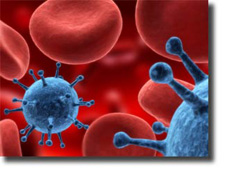Diseases Caused By Bacteria

The Story behind Diseases Caused by Bacteria
Our health is one of our most important considerations, and many people attempt to thwart catching any diseases caused by bacteria through constant hand washing and sanitizing. But is this the best course of action to stay healthy? It may be surprising to learn that the same bacteria that cause diseases are a necessary component to everyday life.
In the world, there are three types of bacteria that surround us in the air, on surfaces and on our very beings. Each has their own specific and unique purpose in life and, while some are responsible for causing grave diseases, most are actually highly beneficial to humans.
Cocci generally account for the smallest of all bacteria, many of which do cause disease. It is this type of bacteria, in fact, that has evolved into what is being termed as the “superbug”; one that is highly resistant to most antibiotics. Food poisoning, meningitis and other serious illnesses sport from a cocci bacteria strain.
Bacillus is a complex bacteria, but an interesting study, as well. This strain of bacteria has the capability of remaining viable for up to 100 years. It is able to do so through the formation of spores, which serves to protect the bacillus from hardships, such as dry conditions. There are some extremely dangerous diseases that are caused by bacillus, including the pneumonic plague, the bubonic plague and anthrax. People are more likely to confront the bacillus virus through experiencing the spoilage of milk.
The third type of bacteria is called spirochaete; there are actually two variations of the spriochetea bacteria, identifiable to the trained eye by their shapes. Vibrio bacterium appears as a rod with a curvature, and usually finds its favorite habitat in stagnant or contaminated waters. Cholera is caused by this type of bacteria. Spirochetea bacterium takes on the shape of a corkscrew, and is responsible for such diseases as Lyme disease.
Although each of these three bacteria types is attributed to several serious diseases caused by bacteria, it is important to note that most bacteria are helpful to mankind rather than harmful. Most people, however, upon hearing the word “bacteria” automatically associate them with illness and disease and feel as though they must do all they can to eradicate them. The overuse of antibiotics and hand sanitizers is thought to kill good bacteria, allowing harmful bacteria the opportunity to mutate and evolve into strains which are resistant to antibiotics. These resistant bacteria are the “superbug” heard so much about in medical reports, becoming more and more dangerous to humans through their quick mutation rate.
Hearing about the harmful aspects of the three different bacteria types will likely make a person wonder how they could possible provide any benefit to humans. Consider the fact that the human body consists of bacteria that outnumber cells ten to one. The digestive system of the human being alone houses many of these bacteria to assist in the digestion of foods. Various types of bacteria strains are found in great numbers in the colon. Some bacteria exist in the system simply to keep other organisms in balance.
Bacteria are also used in the preparation of foods, such as yogurt and cheeses. In order to manufacture antibiotics which will be utilized in fighting illnesses and disease, bacteria are required. Composting and recycling efforts depend upon bacteria for successful results; the bacteria break down the components in these processes to effectively transform one element into another.
Although it is true that there are many diseases caused by bacteria, bacteria are also a helpful and necessary element to the human life. Our health depends on the inclusion of many types of bacteria.